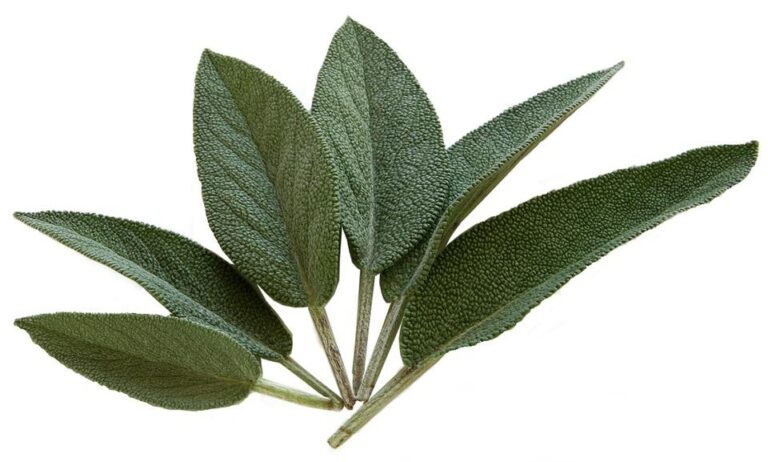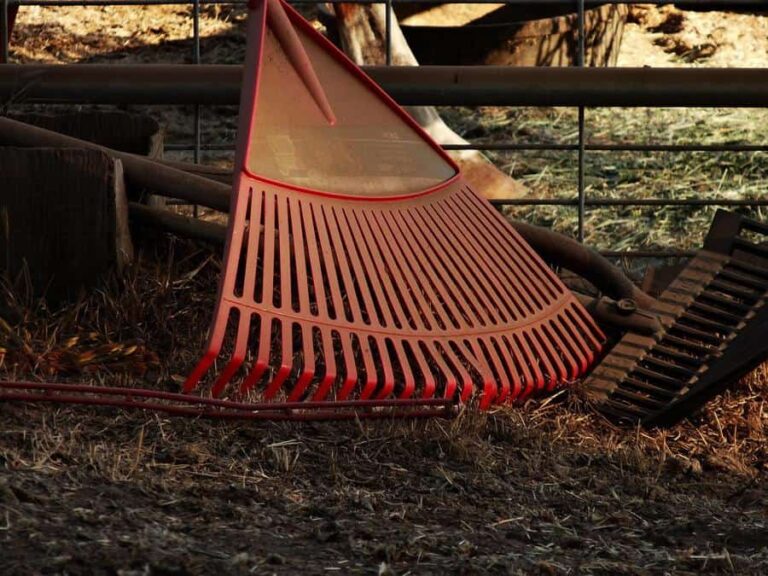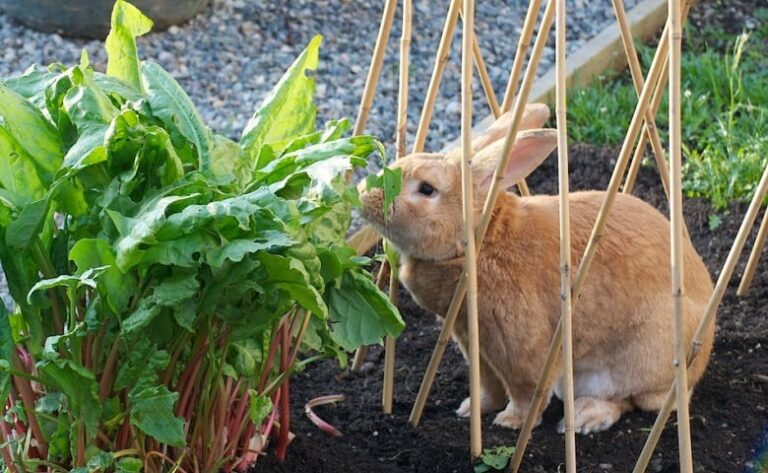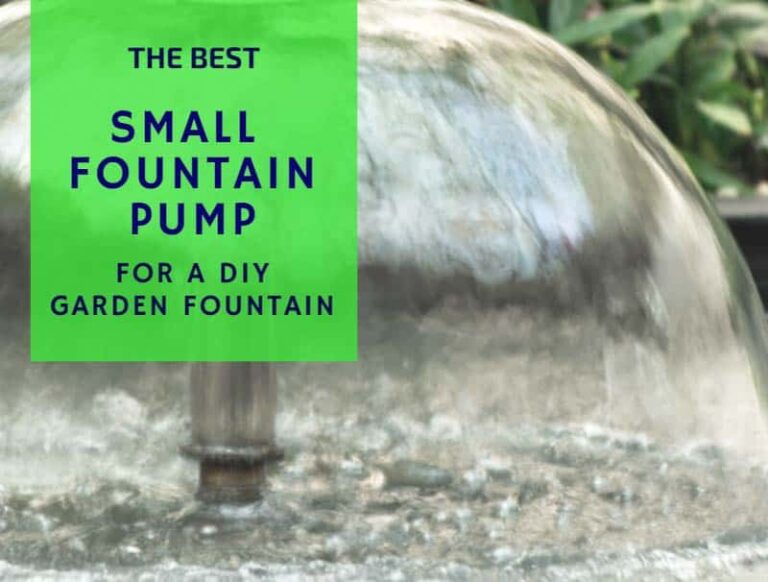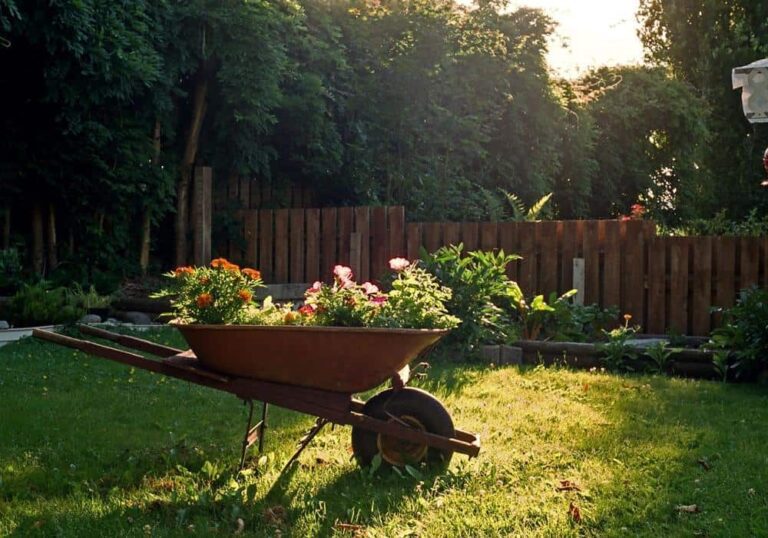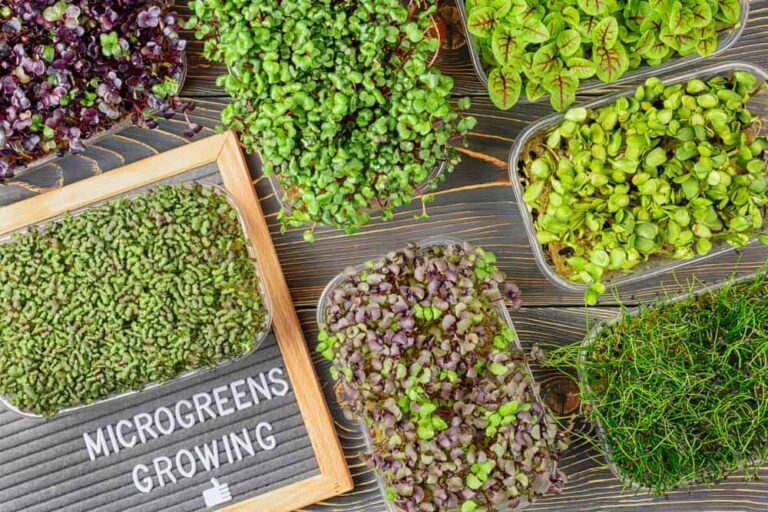How To Grow Basil: The Ultimate Guide
A few years ago, back when gardening was only a passion but I still didn’t have any experience in actually growing a plant, I decided that my first plant to grow would be basil. Everyone seemed to have a pot of basil in their kitchen, everybody claimed that it was easy to grow, so I thought I should give it a try.
I didn’t have the faintest idea of what basil varieties were, I just headed to a local store, bought a pack of basil seeds, a pot, and some soil and headed back home happy that in a few weeks I would have my first basil seedlings.
But what a disappointment! My basil never germinated and that’s when I understood that I didn’t know how to grow basil. So, I learned from the experts and after years of experience I put up this guide that should give you all the basic information on how to grow basil in your garden or in a pot.
Basil Varieties
When hearing the word “basil”, most people automatically think of the Italian cuisine, about flavorful dishes of pasta with basil, pesto al Genovese, and other Mediterranean delicacies. The truth is that yes, Italy is well-known for the use of basil in a wide variety of recipes, but basil actually has East Asian, Indian and African origins and the oriental cuisines also use this herb a lot.
And there are quite big differences between the types of basil used in the different parts of the world.
Basil is part of the mint family and the plant has little under 200 varieties. I believe that a whole new world will open now in front of you since growing basil should begin with the decision of which variety or varieties to grow.
But let’s face it, with so many choices most gardeners will probably never get to know all the basil varieties available out there, so let’s have a look at the most common of them.
1. Sweet Basil
Sweet basil is probably the most common type. It can be easily found on the market, it is used to add flavor to a wide variety of dishes and some even believe that it can be successfully used to repel mosquitoes.
It has rounded, cup-shaped leaves of a medium green color and an intense scent.
A sweet basil variety is the Genovese basil, a classic Italian cultivar. However, the leaves of the Genovese basil are usually flatter than those of the sweet basil and the aromatic flavor of the Genovese is more intense.
On the other hand, the leaves of the Genovese basil are extra-large and of a darker green.
Sweet basil plants grow from 14 up to 30 inches tall and thrive in hot and sunny locations. The growth can be promoted if the plant is pruned often.
2. Thai Sweet Basil
While many don’t see basil in Thai dishes, the truth is that they just use a different kind of basil. Thai basil has smaller, dark pointed leaves and a spicy flavor that resembles more the licorice or the anise clove than the basil we all know.
One of the most popular Thai basil cultivars is Siam Queen, a basil variety that grows up to 24 inches tall and that produces dark purple flowers at the end of the season.
Both the fragrance and the color of this type of basil are unique, therefore it could be a great addition to your herb garden.
3. Lemon Basil
Named this way because of its fresh lemony fragrance, lemon basil is characterized by small-medium light to medium green leaves.
Lemon basil, together with its close cousin, the Lime basil, are becoming increasingly popular as both types can add a tangy, citrus flavor to fish and poultry dishes, deserts or basil infusions.
The lemon basil plant grows up to 18 inches tall while the lime basil reaches about 24 inches.
4. Purple Basil
Who said that basil should be green? If you want to add a little color to your herb garden, growing purple basil could be a solution.
Purple basil strikes with its deep burgundy color and with its large leaves. The flavor is similar to the sweet basil but it has an intense clove taste and it is highly aromatic.
A popular variety of purple basil is Dark Opal, which grows about 18 inches tall and reaches maturity in about 80 days.
5. African Blue Basil
If you are searching for a good-looking, delicious and perennial variety, then African blue basil might be the right choice for you.
African blue basil has a strong fragrance of camphor and mint, it can be successfully used in rice and meat dishes and has purple leaves that turn green with purple veins at maturity.
As long as it doesn’t freeze, this basil variety is perennial but it is hard to find because it is a sterile hybrid that doesn’t produce seeds. Some nurseries sell African blue basil seedlings.
6. Green and Purple Ruffles Basil
With a delicate and mild flavor, green ruffles basil is characterized by its beautiful curled leaves that give it a lovely aspect. It grows up to 24 inches tall and has a medium maturation time, of about 70 days.
Purple ruffles basil, on the other hand, is nothing but a variation of the Dark Opal purple basil and has a similar flavor as its cousin. The plant develops curled leaves of about 2 inches in dimension and grows up to 20 inches tall.
7. Holy Basil
Named this way because it is considered a sacred plant in Hinduism, holy basil has a spicy and musky scent. The plant is mainly used in the Indian cuisine, but it has so many healthy properties that many are using it for infusions as well.
Holy basil is characterized by small leaves and grows up to 14 inches tall.
8. Greek Basil
Growing up to 8 inches tall, Greek basil is one of the smallest varieties and can be successfully grown in pots. The plant develops rather compact, with beautiful small pointed leaves and it has a mild spicy taste.
Besides being delicious, Greek basil is also ornamental and can enhance a windowsill if grown with other short plants such as violas.
9. Spicy Globe Basil
Another excellent choice if you want to grow basil in a pot is this variety that grows as a compact bush and is characterized by small leaves with a spicy flavor.
Spicy globe basil reaches a maximum height of only 6 to 12 inches and it reaches maturity in about 70 days.
10. Cardinal Basil
You might have seen this type of basil growing in the gardens or yards and confounded it with an ornamental plant. And who can blame you?
Cardinal basil is one of those plants that is both decorative and delicious in many dishes, therefore it is somehow popular.
The plant, characterized by bright green leaves growing on a purple stem has a beautiful, burgundy inflorescence that will make a great contrast in your herb garden. It usually grows 30 inches tall and its leaves have a strong spicy scent.
Of course, the varieties presented above are only a little part of all basil varieties and cultivars. As you can see, some are more suitable to be grown in the garden while other do well in a pot too.
So, based on your space availability, you should be able to choose an appropriate variety. Remember that different varieties also have different flavors, so choose wisely what seeds or seedlings you should buy.
How To Grow Basil In The Garden

Basil is one of those herbs that can be easily grown in a pot on a windowsill or on a balcony but as all the other plants one can grow in a herb garden, basil just thrives when grown outdoors.
You can start growing basil from seedlings or from seeds. There are various opinions on which is best, but the truth is that I simply like starting my plants from seeds. Therefore, let’s see how to do it.
Starting Basil Plants From Seeds
Basil can be started from seeds directly outdoors, but I kind of preferring to start my basil plants from seeds indoors, about six weeks before the last spring frost.
Starting basil indoors from seeds is super-easy. However, keep in mind that basil is extremely sensitive to low temperatures and will probably not germinate if the temperatures are below 70°F.
To start basil from seeds you will need:
- Basil seeds- you can choose the variety you like based on the information above.
- Seed starter pots or trays with drainage holes. On the market, there are available both empty pots and pots filled with seed starter soil. I recommend using empty pots or trays and add a good mixture of soil. Alternatively, you can use any type of small containers, such as yogurt cups or juice cardboards that have been cleaned.
- Transparent plastic lid
- High-quality potting soil
- Clean spray bottle
- Water
- Large plastic container
After you gathered the materials, it is time to move to the next step and sow the seeds.
- Fill the plastic container with potting soil and mix it with water until the soil is moist enough to be easily gathered together.
- Check if the sowing pots have sufficient drainage holes and fill them with the moistened soil, leaving about half an inch of space between the soil and the upper edge of the containers.
- Sow a few seeds in each container and cover with a thin layer of dry soil.
- Fill the spray bottle with water and mist the soil above the seeds.
- Place a transparent plastic lid over the containers, covering them well. This should keep the moisture inside and you will probably not have to water the seeds again until they germinate.
- Place the covered seed pots in a warm environment. The temperature should be constantly above 70°F or your plants might not germinate. In ideal conditions, you will see the first green sprouts after 3 to 5 days.
- As soon as you notice the sprouts remove the lid. Leave one basil seedling in each pot, removing the other seedlings with gentle movements.
- At this stage, move the pots in a well-lit location, such as a sunny windowsill. The sprouts should have about 8 hours of direct sunlight or you can use a growing lamp. If you use a grow lamp, give the sprouts about 16 hours of light per day.
- To ensure a healthy grow, position the lamp about 2 inches above the sprouts, moving it up as the seedlings grow. If positioned too high, the seedlings will grow “leggy” and weak.
- Water the seedlings as often as necessary, by placing the pots in a bowl full of water and removing them from the water as soon as the upper part of the soil is moist. Keep an eye on the soil and make sure it never dries. Anyway, remember that you should keep the soil moist not soaked.
- After the seedlings developed the third pair of true leaves, transplant them to their final location.
Planting Basil
As already mentioned, you can transplant basil seedlings in the garden as soon as they developed their third set of true leaves. However, an amendment should be made.
Basil is very sensitive to temperatures, therefore you should not plant any basil outdoors until the frost danger has passed. Ideally, the outside temperatures should be constantly above 60°F.
Terrain Requirements
Basil doesn’t have special soil requirements, although it thrives in well-drained soils with pH between 6 and 7. Because basil must be pruned regularly, it grows better in a terrain that is rich in nutrients. Also make sure that you remove any weeds if possible.
For this purpose, it is recommended to use compost or some type of blood meal and work it in the first 6 inches of soil.
If you want to grow your basil outdoors but plant it in a container, make sure you use a large pot for each basil plant you want to grow to prevent the soil from drying out too quickly.
Spacing Requirements
Depending on the variety, you should leave from 6 to about 12 inches of space between the basil plants. If you plant basil in rows, set the rows at least 12 inches apart in the garden and at minimum 10 inches if you plant basil in a raised bed.
To understand better the spacing requirements, if you want to grow a taller variety, such as Thai, Cardinal, African Blue or Genovese, space the plants at 10 to 12 inches. For smaller, bushier varieties, such as Greek or Spicy Globe, 6 to 8 inches of distance between the plants should suffice.
If you want to plant basil in a square foot garden, you should plant it in a square adjacent to tomato plants. In fact, basil pairs well with the tomato plants in the garden too, therefore you can plant the two crops in the same part of the garden.
If you want to have fresh basil throughout the summer, you can sow a few basil seeds together with the seedlings. The new plants should be mature by the time the first plants will already bloom.
Temperature Requirements
As already mentioned, basil doesn’t tolerate well low temperatures. Ideally, the temperatures should be constantly above 70°F, although the plants can tolerate temperatures between 65 and 85°F.
When it comes to sun exposure, your basil plants will need about 8 hours of direct sunlight each day, with a minimum of six. Ideally, you should plant the basil in a place with partial shade, especially if you live in a particularly hot region.
Furthermore, if you live in a hot region, it is advisable to expose your basil to morning and late afternoon sun, providing shade in the hot noon and afternoon hours.
When planting the basil outdoors, don’t forget to check the nighttime temperature too. A mistake many newbies make is planting their basil in the garden when the daytime temperatures are constantly above 65°F, without considering the nighttime temperature.
If the night temperature drops below 50°F, it is advisable to wait for a little before planting the basil. The reason is simple: if the nights are too cool, basil plants will not grow and they will be soon attacked by snails, earwigs, and other pests.
Watering Requirements
Watering basil is one challenging task because they need constant moist but will most likely rot in a soaked terrain.
For basil plants that are grown in the garden, you should check the moisture of the soil aiming to have a moist soil at a depth of at least 6 inches. Maintaining this requirement, you should then give each plant about 1 to 2 inches of water per week.
Although watering basil is a weekly chore, make sure you adjust the watering frequency and rate to the climate you have. This means that if the weather is too hot, you should probably water more frequently. On the contrary, if you experience frequent or heavy rains, watering your basil so often might not be necessary.
If you grow basil in a container, you will have the possibility to check the moisture level in the soil both on the surface and on the bottom of the container. To check the humidity level, simply stick a finger in the soil. The top part should feel dry but cool.
The lower part of the soil can be felt at the drainage holes, and the soil should be moist and cool. As long as the soil feels like described above, there is no need to water.
When watering basil plants in a pot, add the water from below, adding water in a saucer placed under the pot. Alternatively, you can use a hose or a watering can to water from above, paying attention to not water the leaves.
For the basil grown in the garden, ideally, you should use a soaker hose to water them. Alternatively, use a sprinkler or a watering can very early in the morning or at night, when the leaves are already humid because of the dew.
Fertilizing And Mulching Basil
Basil doesn’t require the heavy use of fertilizers, but it does better when a small dose of fertilizer is applied every four to six weeks. Ideally, you should use a water soluble fertilizer and apply it with the water, otherwise, just choose a well-balanced 10-10-10 or 12-12-12 nitrogen, potassium, and phosphate fertilizer.
To fertilize the plants, scatter about one tablespoon of fertilizer around each plant and water thoroughly. Maintain a distance of a few inches between the plant and the fertilizer.
For an organic solution, you can fertilize with manure tea, compost tea or blood meal.
To maintain the humidity of the soil and to prevent some pests, you can mulch the basil either with organic mulch or with plastic mulch. Black plastic mulch could also be an inspired choice if the nighttime temperatures are rather cool but you still want to transplant the seedlings outdoors, since it maintains the soil warmer.
Do Basil Plants Need Pruning?
There is only one simple answer to this question: yes! And you will prune them each time you harvest. But there is a right way to do it.
Pruning is essential to ensure a healthy development of the plant, and you can start doing it as soon as your plant reaches about 12 inches in height. For the dwarf varieties, these should be 6 inches.
Pruning allows you to grow beautiful, bushy plants and the leaves cut off can be used for cooking or other purposes. So there is a win-win situation: you cure the plant and harvest at the same time.
To prune the basil, cut the stalk at the height of the second set of leaves, leaving them attached to the root. You will notice that two new branches will develop from that point.
As soon as the new branches developed a few sets of leaves, cut them just above the second pair of leaves, as you did for the main stalk. At this point, from each branch will grow two new branches. Continue pruning your basil plants in this way for the rest of the season.
This will ensure both a regular harvest and will make your basil plants thrive.
A thing to remember, if you want to have a long harvesting time, don’t let your basil plants blossom. To do this, just prune regularly to prevent the growth of the flowers.
If your basil blossoms, the flowers will produce seeds and the plant will die shortly after. Therefore, only let your basil blossom when you are ready to harvest the seeds.
Of course, if you are growing basil for ornamental purposes, such as the Cardinal variety, having your basil blossom is a natural consequence. In this case, at least harvest the seeds and save them for future crops.
Harvesting And Storing Basil
Since in the case of basil harvesting and pruning are the same thing, you can use the above indications for harvesting purposes. To harvest at the end of the season, or if you don’t want to prune anymore, just pull off the leaves you need, as gently as possible to not damage the stem.
Ideally, you should only harvest the right amount of basil needed for the dish you’re cooking, as basil tastes better when fresh.
However, if you have excess basil, you can store it in the fridge for up to one week.
If you need to store it for a longer time, the best thing to do is to freeze it, either the whole leaves or chopped.
To freeze whole leaves, simply put them in a freezer bag and in the freezer. Chopped leaves are better preserved in ice cube trays, covered with water or oil and then frozen.
If you want to use basil for infusions, dry the leaves and store them in a dry place in a closed box or container.
Alternatively, you can use excess basil leaves to make flavored oil or vinegar or to make pesto salsa that can be then stored.
How To Grow Basil Indoors
If you don’t have a garden or a south facing balcony, you can still grow basil indoors. Almost all types of basil can be grown in a pot, although I would recommend choosing a dwarf variety.
If you choose to start from seeds, the method described above is valid in this case too. Therefore, let’s see how to grow basil indoors once you have large enough seedlings.
You will need:
- 6-inch diameter pots – as many as the plants you want to grow
- Sterilized indoor potting soil
- Grow lamp
How to grow basil indoors
- After checking each pot for drainage holes, fill them with potting soil to about six inches from the top.
- Put each seedling in the middle of a pot and fill the rest of the space with soil or compost. Water thoroughly to prevent transplantation shock.
- Set the pots on a sunny windowsill where the plants can get at least 6 hours of full sunlight. If that’s not possible, ensure at least 16 hours of light per day using a grow lamp. In this case, place the lamp two to four inches above the plants to prevent burning them.
- Simulate the wind with the help of a fan, ensuring at least two hours of wind per day.
- Water the plants regularly. You can check if they need water using the method described above. Every 4 to six weeks you can add a handful of fertilizer together with the water.
- When the plants are large enough, start pruning as described above to maintain the bushy aspects of your basil plants.
You will be able to store excess basil exactly as explained above.
Basil Common Problems And Solutions
My basil plants won’t sprout/grow. Why?
One of the most frequent issues is having a basil plant that won’t grow. Or worse, won’t sprout. In most of the cases, this happens because the temperatures are simply too low.
To solve this problem, move your basil plants to a warmer place. To germinate, the temperature should be above 70°F, while temperatures above 65°F will promote the growth of the seedlings.
Light is another factor that can influence basil growth. You should keep the plants in full sunlight for at least 6 hours per day, ideally for eight. If that’s not possible, consider using a fluorescent lamp until the weather is warm enough to transplant the seedlings in the garden.
Basil Common Diseases And Pests
Just as every other herb or vegetable, basil is subject to a number of pests and diseases. Let’s see how to deal with the most common ones.
Common diseases
- Basil Shoot Blight: a common disease caused by a bacteria, causes brown or black spots on the leaves and stems and usually occurs when the infected soil is splashed on the plant.
- How to solve: you should water carefully, paying attention to not splash soil on the leaves. Maintaining the minimum spacing required is also helpful. Unfortunately, the disease has no cure, so you will probably have to remove the infected plants.
- Fusarium wilt: causes yellow leaves and spots on the stem and it will eventually lead to leaf loss. It is caused by a fungus present in the soil, the source of infection being in most of the cases an ill seed. The fungus can survive in the soil for several years, therefore a proper rotation of the crops is essential.
- How to solve: rotating the crops, maintaining the spacing and not watering the leaves might help. If you notice the disease, don’t plant basil, mint or jasmine in the same spot for several years.
- Downey mildew: initially, the leaves will start turning yellow and eventually fuzzy gray-purple sporangia will grow on the lower surface of the affected leaves. The disease can be introduced by affected seeds while the sporangia can be carried by the wind at long distances.
- How to solve: there are few antifungal solutions to use for this disease. However, some varieties of basil, such as Thai basil or the spicy types such as Cinnamon basil are more resistant to the fungus. (http://vegetablemdonline.ppath.cornell.edu/NewsArticles/BasilDowny.html) You should also respect the spacing requirements and maintain a low environmental moist by avoiding to water the leaves and the stems of the plants.
Common Pests
- Aphids, whiteflies, and spider mites are common insects that can feed on basil leaves or suffocate them.How to solve: maintain the correct spacing between the plants and spray a water and soap solution to eradicate them.
- Slugs and snails: both slugs and snail eat basil leaves.How to solve: handpicking the mollusks as soon as you notice them might be a good solution. If you notice them, it would also be a good idea to remove the mulch if you used any. Attracting natural predators to your property could be a further effective solution to eradicate snails and slugs.
- Japanese beetles: these half-inch long bright green beetles will eat the leaves of your plants leaving you with a crop of basil skeletons.How to solve: handpicking is the best thing you could do. Alternatively, spray your plants with a solution of water and soap, but remember to wash well the leaves before consumption. Another alternative method is to cover your plants with a thin fabric. In this way, you will prevent both the Japanese beetles from getting on your plants and other insects to deposit eggs on the leaves.
- Grasshoppers: they eat your basil leaves, but unless there is a plague, you shouldn’t worry about them too much.How to solve: if you really want to get rid of the grasshoppers, introduce their natural predators to your garden. Some birds feed on them.
Final Thoughts
Now, how to grow basil both indoors and in the garden is no longer a mystery. So, choose the variety, buy the seeds and start growing your organic basil plants.
Have you ever tried growing basil? Have you had any difficulties? Or is this your first attempt? If you have questions or tips, please leave us a comment below.
And don’t forget, if you want to grow it indoors, choose a dwarf variety. On the contrary, for an absolutely lovely effect, choose more than one variety, including a purple one, and plant all of them in your garden. Your neighbors will die with envy when looking at your colorful crops!

